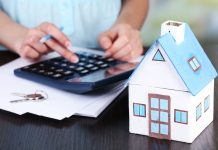The Hydraulic Scissor lift table is probably the most commonly used industrial lift. A hydraulic table lifts seem complicated but in reality, it is pretty simple and easy to use.
There are 5 main components in a hydraulic scissor lift table:
· Platform
The platform comes in a variety of sizes and basically it is used for placing products that can be lifted to the desired height.
· Base
The base sits on the floors and holds the entire structure from the bottom. It has a track that is used by scissor legs for expanding and contracting.
· Scissor Legs
The scissors legs are placed vertically between the platform and the base. These legs allow the elevation change.
· Hydraulic Cylinder
The scissor lifts mostly used in the industry are stimulated by one, two or three single acting hydraulic cylinders. These allow the legs to go lower and elevate accordingly.
· Power or Motor Source
Usually hydraulic scissor lifts are driven with the help of air or electric motors. The motor boosts the hydraulic pump which later enables the lift table.
Hydraulic Lift Table Operation
As the hydraulic fluid moves within the hydraulic cylinders, the hydraulic table elevates and lowers. The scissor’s legs are spread apart as the cylinder strokes outwards.
Raising the Lift Scissor Lift Table
The legs are connected with the platform and the base at both ends, which means that when the scissor legs open the platform rises upwards. The base has tracks fitted at both sides and have rollers attached in them which enables the free ends to move without hindrance.
A column of fluids is what supports the elevated lift table. The lift table manages to stay in the raised position because of the check valve that keeps the fluid in the cylinder.
The speed of the lift table’s elevation is entirely dependent on the motors and the hydraulic pump which turns it on. The required capacity and up speed depends on the work load over the motor, thus it requires horsepower. More horsepower is required if you want the lift
table to operate faster. Same is the case with greater capacity, it needs more horsepower in order to lift more.
Lowering the Scissor Lift Table
Lowering the lift table also works in a similar manner, the fluids flow out of the cylinder via the down valve at a controlled rate. The down valve remains closed until the electric solenoid is activated. This feature prevents the platform from falling in case of a malfunction or power failure. The fluid slowly moves towards the reservoir as soon as the down valve is opened by the solenoid.
The scissor lift table’s down speed is entirely controlled by the speed in which fluid leaves the cylinder. It is done with the help of FC valve or most commonly known as the flow control valve. What this means is that the flow is determined before-hand and it doesn’t exceed the range whether loaded or empty. The down and up speed of the lift table is synchronized and the flow control valve rate remains fixed and non-adjustable. If you are confused and need help with choosing the right lift table LLM Handling have an array of lift tables that you can compare. Visit our store in Ottershaw, Surrey call us on 01932 807377 with your query, our engineers are waiting for you.




















